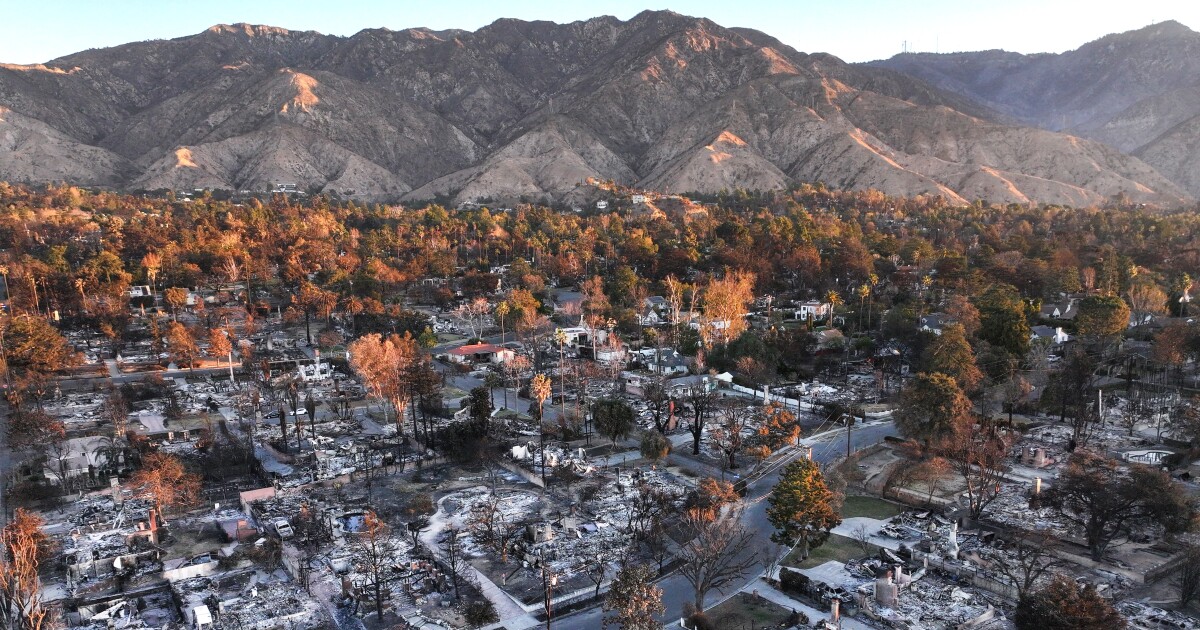
As homeowners and insurers wade through reconstruction efforts following the California wildfires, they are raising questions about the true cost to rebuild and what happens if and when the money runs out.
Analysts with Morningstar DBRS dove into this very dynamic in an April 7 report, which highlighted noteworthy statistics like $12 billion in payouts and
Losses will be more pronounced for insurers with concentrated footprints in the state when compared to those operating more broadly, as evidenced by the roughly $4 billion in estimated total incurred losses from the wildfires for the state's Fair Access to Insurance Requirements Plan.
State Farm General (SFG), State Farm's homeowner insurance provider in California, reported the largest estimated gross loss of $7.6 billion and a $612 million net loss. The firm requested an emergency 22% premium rate hike to offset the losses, garnering a
"Appropriate risk-based pricing is critical for insurers to achieve sustainable operations; however, the restrictive regulatory environment in California has materially discouraged appropriate pricing actions, leading to unsustainably low premiums," the report said.
State Farm was one firm among many that contributed to a $1 billion assessment for California's FAIR Plan in February, putting projections for the state insurer of last resort's cash buffer at $305 million on June 30, "which, in our opinion, is still relatively thin considering that the wildfire season is far from over," analysts said.
Read more:
These losses extend to financial institutions as well. Insurance limits, damage severity and insurance payouts are hot topics among banks and account holders, as lenders ponder the future of the commercial real estate market.
Similar estimates from
Matt Anderson, co-founder of the real estate analytics company
"If [property owners] are caught in between, they may be in a position where they might have to miss a payment or two with their bank," Anderson said. "The first line of defense is always to be proactive and reach out. … It's definitely a red flag if your borrower is unresponsive."
Read more:
More below.
FHA waives QC reviews for certain distressed mortgages
The Federal Housing Administration is offering quality-control review waivers to Southern Californian homeowners struggling with mortgage payments in the wake of the January wildfires.
Review waivers will be offered only to
"For mortgages that closed prior to the incident period and became EPDs in the months after, defaults are likely to be the result of loss of employment/income, property damage, forced relocation and other factors unrelated to noncompliance with FHA single-family origination and underwriting requirements," HUD noted in the waiver request.
Read more:
Commercial real estate turned upside down by LA fires
Residential and commercial properties across Los Angeles County were razed to the ground by the historic fires in January. Banks that backed the businesses are starting to figure out what the long- and short-term effects will be.
Data sources vary on the financial toll of the blazes, with
"There has been some commercial impact," Matt Anderson, co-founder of the real estate analytics company
Read more:
The need for urgent insurance changes grows following LA wildfires
Insurers in the California home insurance markets were adjusting to regulatory moves before the wildfires came and went, magnifying the vulnerabilities in the region. Now, as losses continue to pile up, the significance of reform is even greater.
A recent report from Morningstar DBRS highlighted statistics from the California Department of Insurance showing roughly 38,000 claims and more than $12 billion in payouts as of March 5, fueling analyst estimates for insured losses to surpass $30 billion industry wide.
Insurers like State Farm General (SFG), State Farm's homeowner insurance provider in California, are starting to feel the crunch, with its $7.6 billion estimated gross loss against a comparatively low $612 million net loss.
"The large wildfire losses are manageable for most national players but will add to the concerns about their capital allocation and profitability in the California insurance market," Morningstar analysts wrote in the report.
Read more:
California teeters on edge of a new insurance bailout
Following the destruction of the Palisades, Eaton and other smaller wildfires that tore across Southern California in the first quarter of the year, the state's insurer of last resort is stretched dangerously thin — making the incoming dry summer season a worrying one.
State Farm, Allstate Corp. and Chubb Ltd. are among a host of member companies that support the California FAIR Plan, which received a $1 billion infusion in February to strengthen capital reserves for handling wildfire liabilities. This measure is known as an
"The risk is really clear," Sridhar Manyem, head of industry research at AM Best, a credit-ratings company specializing in insurance, told Bloomberg News. "Depending on the severity of the next wildfire, there is the possibility of a future assessment."
Read more:
Hedge funds root out winning subrogation deals in wake of LA fires
Hedge funds are adopting investment models focused on subrogation claims in the wake of the LA wildfires, as insurers pessimistic about recouping losses seek a financial alternative.
Subrogation claims are a tool for insurers to gain back portions of their payouts to policyholders when they deem third-parties like utility companies to be liable for damages. If executives aren't hopeful about the prospect of recovering money, they can sell off the claims to alternative investment managers like hedge funds.
The claims are still fairly risky, and "in markets like we've been seeing lately, the appetite for risk among buyers generally diminishes," Bradley Max, a director at the New York-based investment bank Cherokee Acquisition, told Bloomberg News.
Read more:



